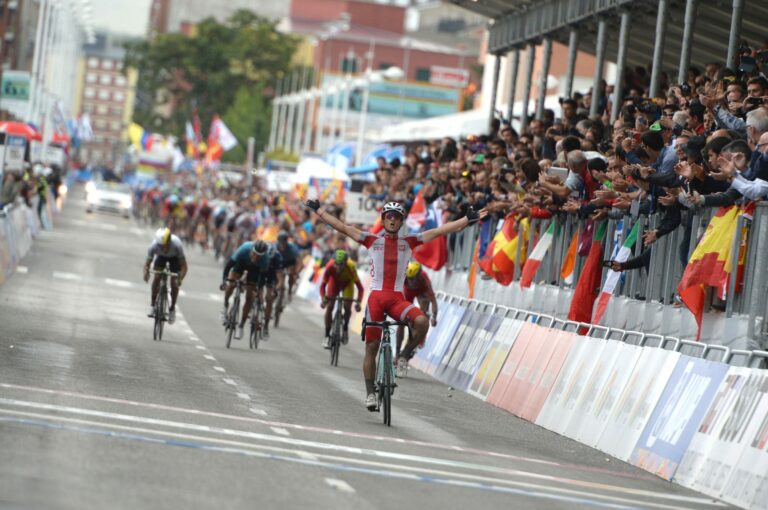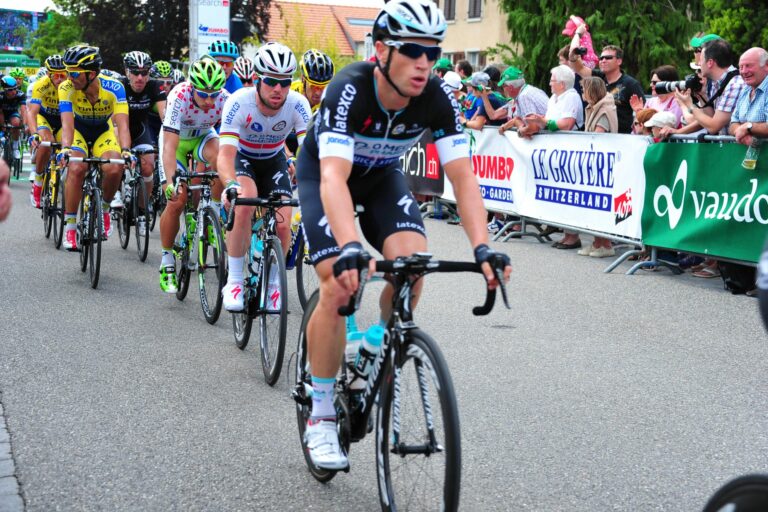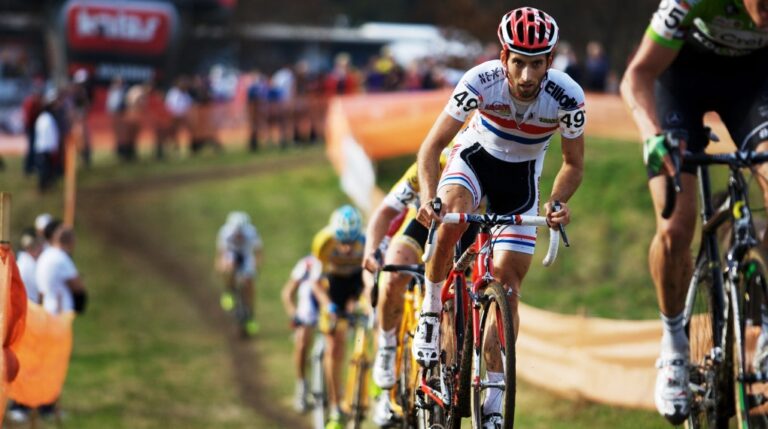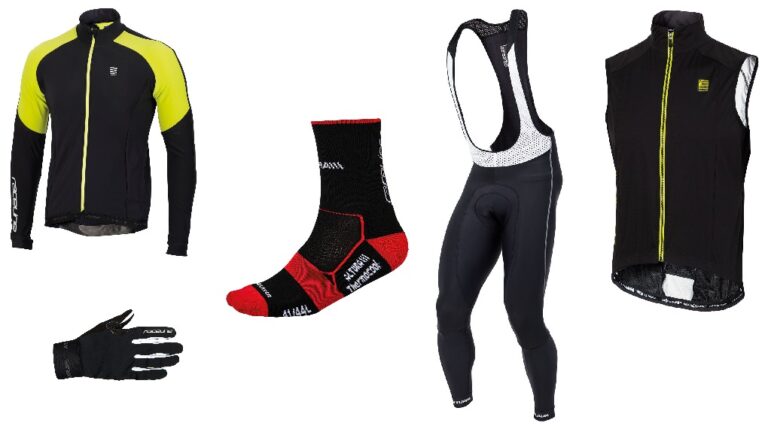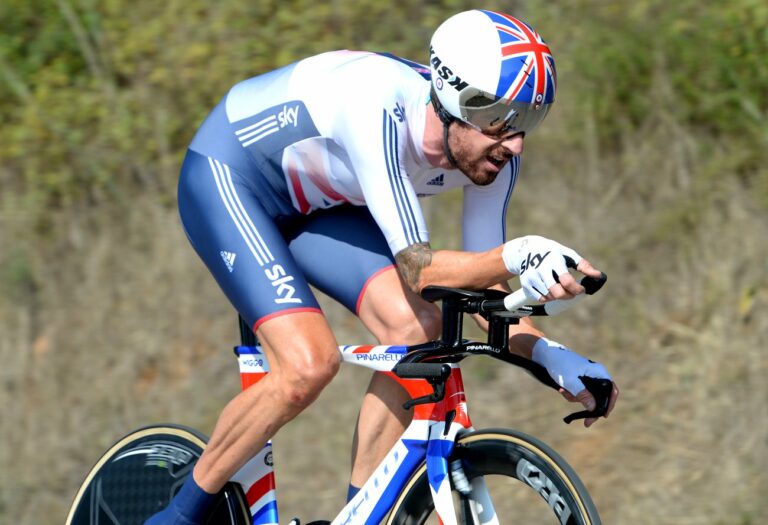Stage nine of the Vuelta a Espana saw a stage on this year’s route won from the break for the second time – following Alessandro de Marchi’s stage seven success.
Winner Anacona (Lampre-Merida) took the stage honours, the last remaining survivor of a 31-man move which went away after 25 kilometres.
But just where did the break gain on the bunch, and how did the efforts in a smaller move compare to being a part of the peloton?
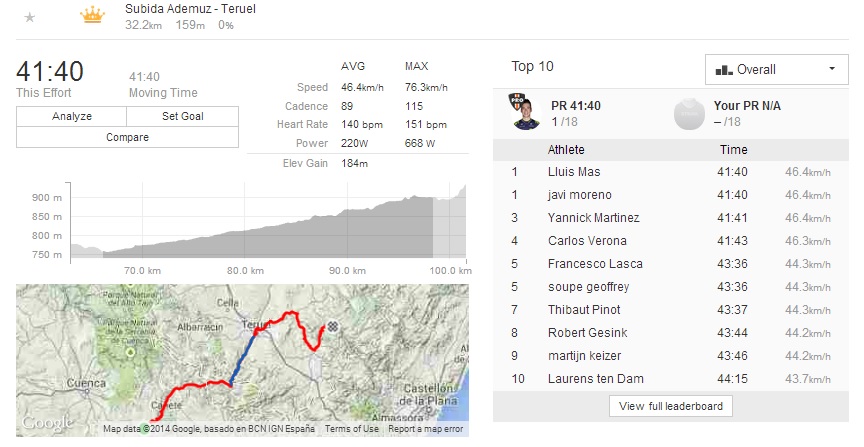
Four of the riders in the move, Carlos Verona (Omega Pharma-Quickstep), Yannick Martinez (Team Europcar), Lluis Mas (Caja Rural) and Javi Moreno (Movistar) have uploaded their rides to route tracking app Strava.
With their stats and Strava KOM titles on show, it offers us the chance to see just how the break was powered and how the individual roles of the riders in the break had an effect.
Moreno, for example, was marking the moves of those around him as he fought to ensure his team retained the red jersey – though it did ultimately change hands from Alejandro Valverde to team-mate Nairo Quintana.
Mas, on the other hand, was seeking out King of the Mountains points as he looked to strengthen his grip on the blue polka dot jersey.
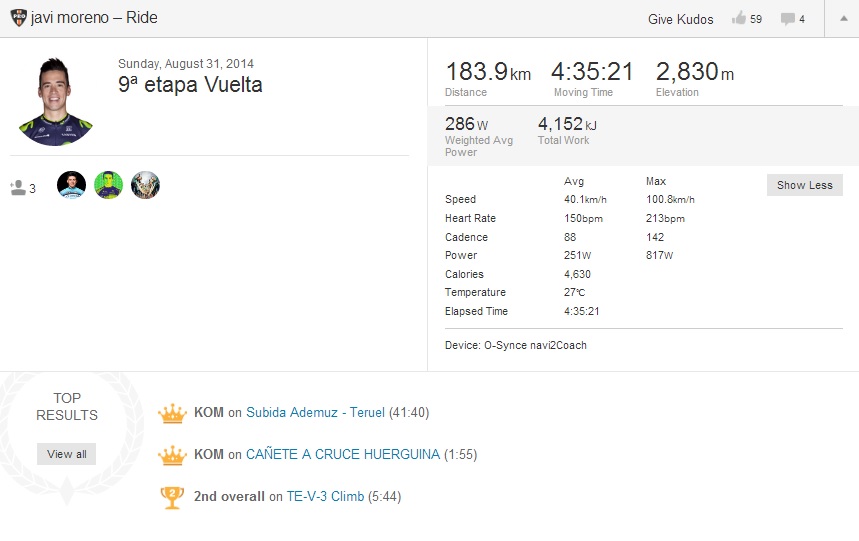
Moreno’s role is clear from his stats as the break went clear, on the flatter Subida Ademuz to Teruel segment, where he was fastest of all the escapees across the segment.
With the bunch giving the break leeway to attack – Mas, Moreno, Martinez and Verona traversed the 32-kilometre segment nearly two minutes faster than the Strava users in the peloton – Moreno’s pace-setting saw him set an average speed of more than 46km/h.
Moreno’s average cadence for the segment is given as 89rpm – similar to his average figure for the whole ride – while his power output, as recorded by a power meter, is 220 watts.
As a result of his consistent pace-setting, his Movistar team-mates were able to keep the break at a manageable distance throughout – despite Anacona ultimately surging up the overall standings after his stage win.
Mas, meanwhile, set an identical time over the section as the Spaniard looked to earn road position ahead of the categorised climbs.
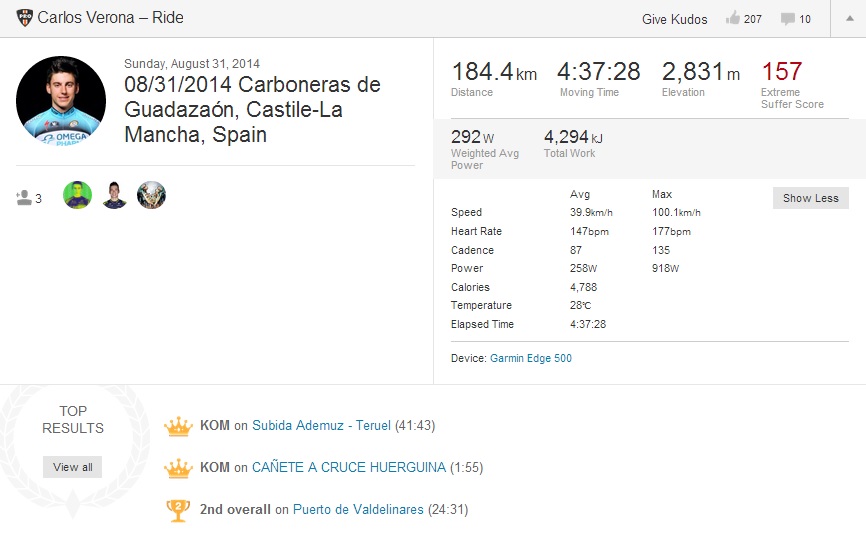
Verona, on the other hand, was in the break in the hope it succeeded and with the added fall-back of being able to support GC leader Rigoberto Uran if it did not.
Verona’s stats for the ride, however, are remarkably similar to those of Moreno – showing just how attentively Moreno performed his pace-setting duties up the road.
It was on the climbs, however, where the bunch began to reel the escapees back in – with Strava’s new Effort Comparison tool showing just how much ground the peloton made up.
Robert Gesink (Belkin), who maintained his top-ten finish overall on the stage, was among those at the front of the bunch as Tinkoff-Saxo, Sky and Movistar looked to ramp the pace up.
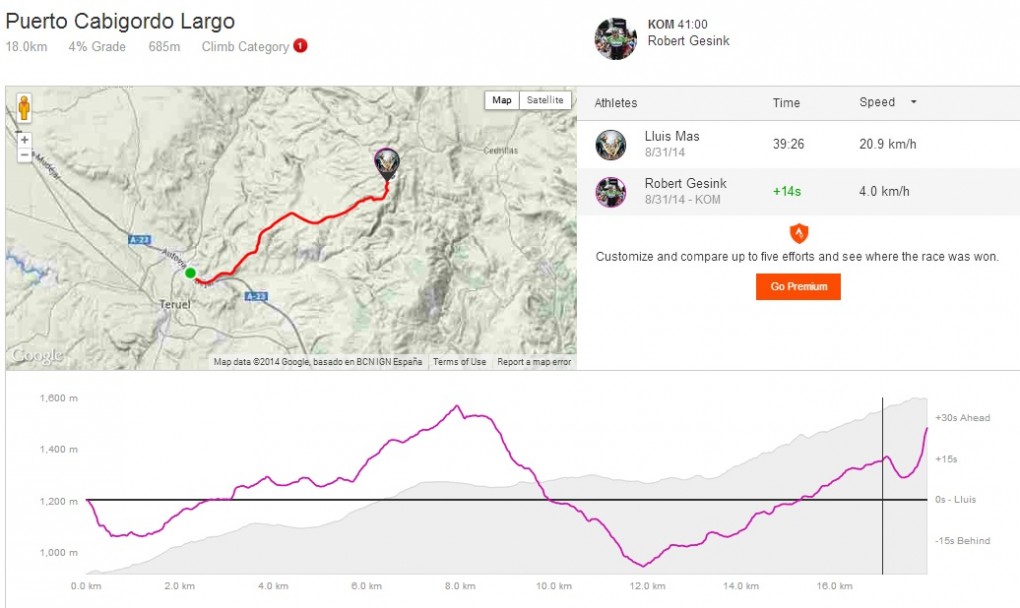
A comparison of Gesink and Mas’ times on the Puerto Cabigordo Largo segment shows how the break looked to press home their advantage on the flatter sections but were reeled in rapidly on the steepest sections.
The effects of spending a day up the road are also laid bare by the Strava stas – particularly when the efforts on the final climb are compared.
Daniel Martin (Garmin-Sharp) and Alberto Contador (Tinkoff-Saxo) both accelerated on the final climbs, their efforts splitting the red jersey group on the steepest slopes.
Gesink’s stats reflect this, particularly when compared to Moreno who – when Anacona accelerated in the final six kilometres – eventually dropped back in among his former breakaway companions to roll in fourth.
When compared to Gesink, the difference in the two can be seen clearly – particularly on the steepest sections of the final climb.
The Dutchman’s speed is significantly quicker than Moreno’s – particularly coming out of the two switchbacks on the climb, and on the more brutal slopes – reflected in the picture.
Gesink was ultimately more than two-and-a-half minutes faster on the climb than Moreno, with the latter’s Movistar team-mates Quintana and Valverde having been faster still.


